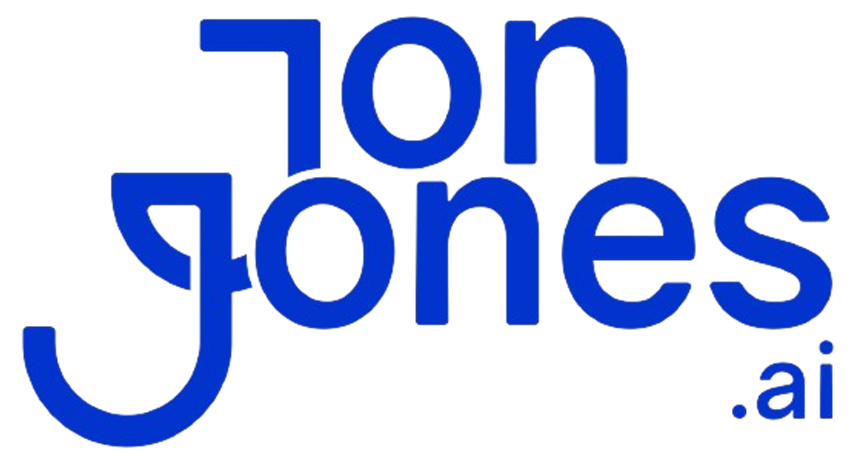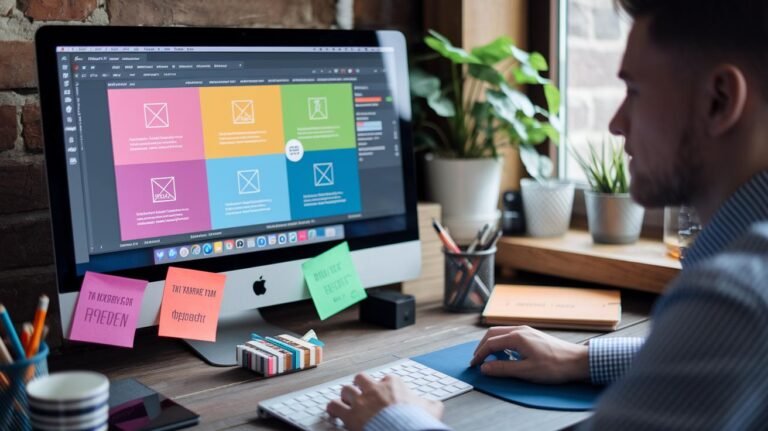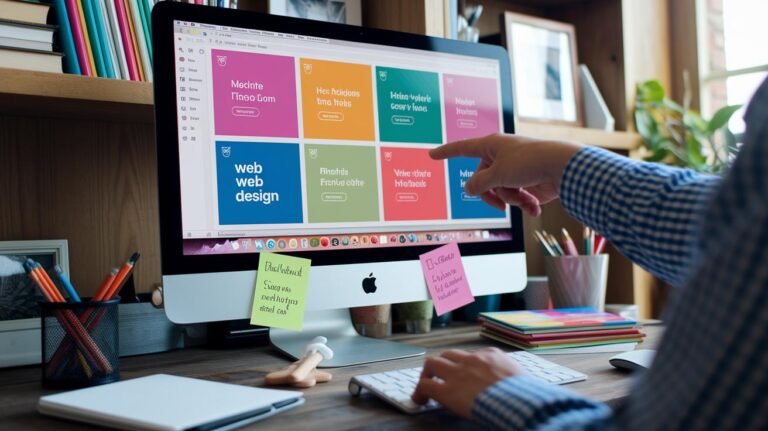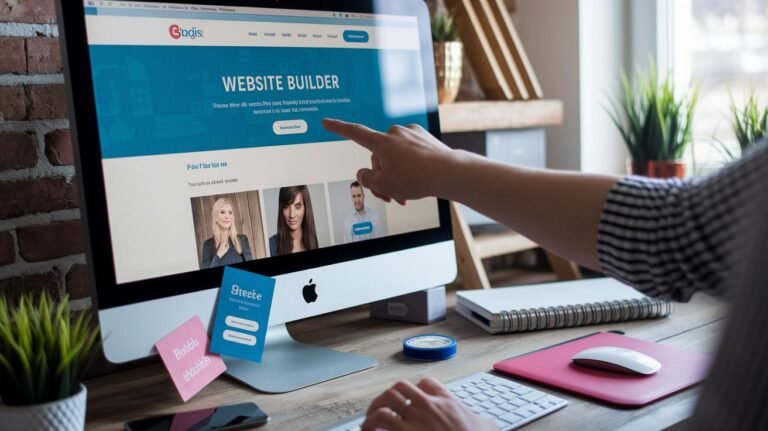Ever feel like you’re buried under piles of color swatches, font options, and never-ending layout tweaks? We’ve all been there.
Design automation software (an AI-powered tool that picks your colors, fonts, and layouts) is rewriting the web design playbook. Designers say they cut project time by up to 60%.
Nice.
Next, we’ll dive into seven AI tools that speed up your workflow and give you data-driven insights. Then you can zero in on the creative spark that makes your site shine.
AI Tools for Web Design: Transforming Workflows and Outcomes

We live in a world where AI design automation (software that handles layout, font, and color tasks) changes how you tackle repetitive design work. Designers say they save hours per project. You know, templates go from a blank screen to pixel-perfect in seconds.
Today’s AI web design trends lean on data. These tools track clicks, scrolls, and hovers to spot user experience (UX) snags. Then they suggest tweaks that boost conversions.
Picture your dashboard lighting up with live heatmaps and button fixes in real time.
Rapid prototyping (building a quick design model) is a total game changer. With one click, you generate wireframes and mockups so you can test ideas before writing a single line of code. And AI content generation (automated text, image, or video creation) keeps you from hunting for media.
- Layouts that auto-generate for clean, responsive pages
- Color schemes that naturally match your brand
- Template libraries to keep designs pixel-perfect every time
- Instant insights on user behavior for data-driven tweaks
Ready to build faster? Check out how to create a website with ai and experience the future of AI in web design.
Top AI Website Builders Enhancing Web Design

Ever need simple drag-and-drop or the ability to dive into code? These top artificial intelligence (AI) web design tools make site building feel like a sprint, not a marathon. We’ll break down ease-of-use, design freedom, and code control so you can pick your match.
-
Wix ADI ranks as a best ai website builder. Its AI wizard sketches a custom layout, picks your colors, and suggests images in minutes. You drag and drop to polish, then publish in under 10 minutes. Plans start free (with Wix branding) and go up to $17 per month.
-
Jimdo’s AI draft builder asks a few questions, then pulls together a page layout that matches your input. It’s one of the most budget-friendly AI web builders out there. You’ll start with a free plan (with Jimdo branding) and can upgrade from $11 per month.
-
CodeWP zeroes in on code generation for WordPress, WooCommerce, Elementor, and Metabox. You get 20 free AI-generated code snippets each month. Paid plans kick off at $28 per month, so you can paste ready-made code into your project.
-
Framer AI turns your detailed prompts into rough prototypes, complete with draft text and image galleries. The free tier lets you experiment, and hobby plans start at $10 per month for extra pages. Then you refine the AI draft in a full-featured builder.
-
Relume AI Site Builder converts your prompts into sitemaps, wireframes, and style guides you can export straight to Webflow. It smooths out those early design phases without any coding. Pricing is custom and usually starts with a trial so you can test its sitemap and component library workflows.
AI Design Software for Layout, Prototyping, and Mockups

AI (artificial intelligence) design tools now do the heavy lifting, turning rough layouts into high-fidelity prototypes. We can go from a paper sketch to a clickable mockup in minutes. These tools streamline wireframes, enforce brand consistency, and give you back time for creative polish.
-
Uizard uses AI to convert hand-drawn sketches into interactive prototypes. Snap a photo of your paper sketch and watch clickable screens pop up in seconds, no more redrawing in Figma. You’ll test UX flows faster and focus on what really matters.
-
Adobe Creative Cloud brings AI right into Photoshop, Premiere Rush, and InDesign with Sensei (AI engine) and Firefly (creative assistant). Automated logo suggestions, brand-color fills, and one-click photo fixes let you polish images without wrestling with masks or layers.
-
Relume’s AI plugin for Figma builds sitemaps, style guides, and ready-to-export component libraries. We fire up the plugin to spin up responsive grids and consistent UI parts, then push everything into Webflow for live pages in minutes.
-
Pixel-perfect AI layout tools spot stray pixels, balance white space, and tweak designs for every screen size. They suggest grid adjustments so your mockups match developer specs, minus the endless manual fixes.
With these AI-driven layout and mockup generators in your toolkit, you’ll speed through wireframing and prototype sprints. Instead of wrestling with grids and style guides, you’ll zero in on user flows and that final creative shine.
AI Content and Image Generation in Web Design

So you want eye-catching visuals and on-brand copy without spending hours on it. These AI (artificial intelligence) tools step in to streamline your web design.
- Midjourney: an AI-driven image creator that lives in Discord (a chat app). It turns simple text prompts into detailed, high-res headers or hero images in minutes.
- DALL·E 2: an AI model that whips up realistic or playful visuals from your prompts. It’s perfect for custom icons or brand mascots that feel unique.
- Stable Diffusion: an open-source AI engine (software you can tweak) that produces photorealistic backgrounds in seconds. It’s one of the top free tools for web design.
- Human Generator by Generated Photos: a library of diverse, natural-looking human portraits. Adding people to your pages can boost sales by up to 95%.
- VanceAI: a one-click image upscaler (tool that sharpens, denoises, and removes backgrounds). Your visuals stay pixel-perfect on any screen.
- Jasper AI: excels at AI content generation for web copy, blogs, and social posts. It hooks into Webflow so you can drop text right onto your live pages.
- Designs.AI: a full media suite for logos, banners, and videos. You’ll also get text-to-speech, writing tools, and an AI video background generator.
Next, let’s automate your media pipeline. Feed rough sketches or prompt ideas to Midjourney or Stable Diffusion, then fine-tune them in your favorite editor. We’ll use VanceAI to upscale images, grab video backgrounds from Designs.AI, and let Jasper AI draft your headlines and body copy instantly. This setup creates a smooth workflow where AI content generation and image creation happen side by side. You’ll have more time to nail user flows and give your site that final polish.
Integrating AI for SEO, Analytics, and UX Optimization

AI SEO optimization tools tackle boring tasks like meta tags, keyword research (finding words people search for), and content ideas in seconds. You’ll watch your rankings climb as these tools point out missing titles, suggest related terms, and even draft catchy taglines for your readers. Nice.
When we connect your AI platform (a system that runs smart algorithms) to Google Analytics and heatmap services (visual maps of clicks and scrolls), you get live data on clicks, scroll depth, and visitor journeys. You can set alerts for traffic dips or spot underperforming pages before they hurt your conversion rate. Got it.
Our AI website audits run a full scan of your site – they check load speed, broken links, and on-page SEO issues. You’ll get a ranked list of fixes with severity scores so you and your dev team know exactly where to sprint first. Next, we’ll tackle design.
When AI heatmap analysis finds hot spots or cold zones, it will suggest simple layout tweaks – like moving your call-to-action button above the fold or boosting contrast on key visuals. Then you can A/B test (comparing two page versions) those tweaks right away and fine-tune designs for higher click rates. Results matter.
Our AI accessibility checkers flag gaps in WCAG compliance (Web Content Accessibility Guidelines) – missing alt text, low color contrast, or missing aria labels. Automated fixes can roll out in minutes so you’ll reach more users and sidestep legal headaches. Nice.
Pricing and Feature Comparison of AI Tools for Web Design
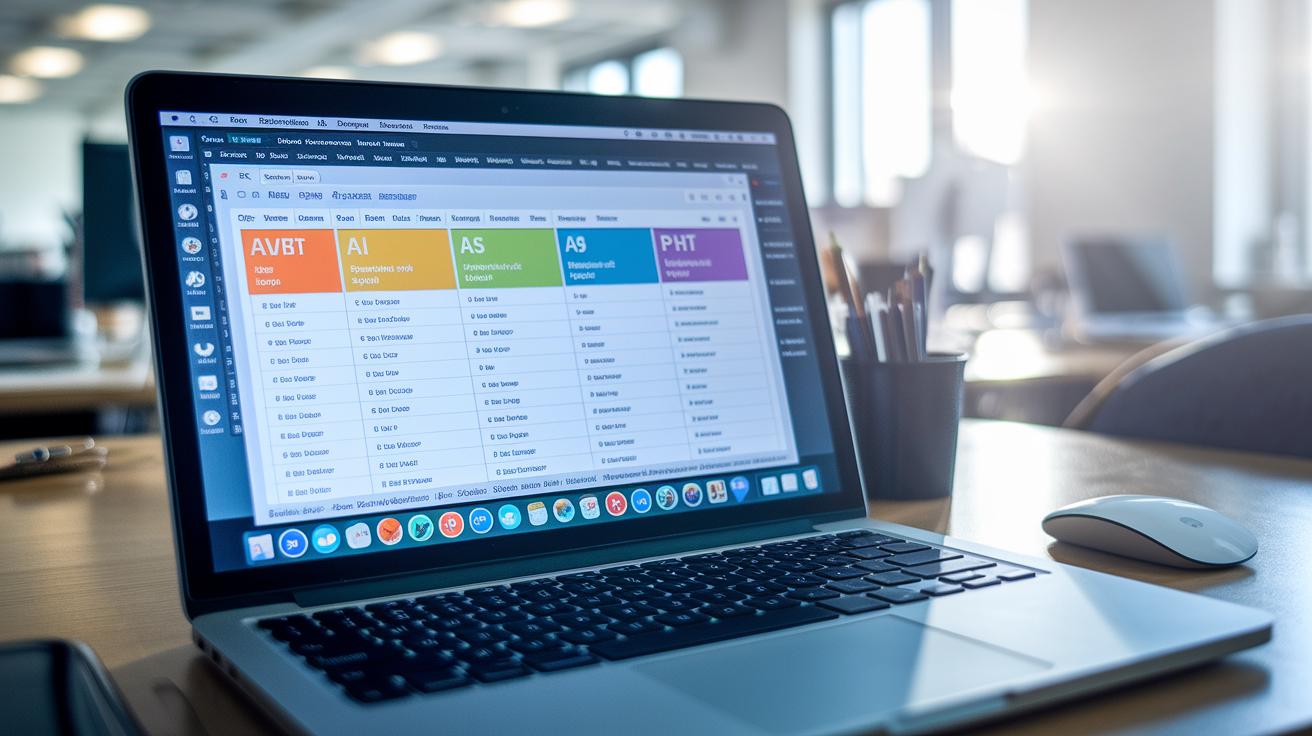
When you’re choosing a website builder, we like to line up subscription costs right next to potential savings. That way, you’ll see ROI (return on investment) at a glance.
- Calculate time savings: If AI cuts 10 design hours at $50 an hour, you save $500, that’s enough to cover 25 months of a $20 plan.
- Forecast page fees: If your builder charges $2 per page after 15 pages, a 25-page site adds $20 to your base rate, no surprises.
- Link integrations to revenue: Syncing your CRM (customer relationship management system) can boost lead capture by 15%. A $17/month plan turns into a direct sales driver.
| Tool | Entry Price | Top Integration |
|---|---|---|
| Wix ADI | $17/month | Mailchimp |
| Jimdo | $11/month | Built-in Editor |
| CodeWP | $28/month | WordPress |
Best Practices and Ethical Considerations for AI Web Design Tools

Even the smartest AI (artificial intelligence) design tools can slip up. We’ll walk through how you spot odd typos, layout glitches, or copyright traps before anything goes live.
- Give every AI suggestion a quick human check. It’s like an eyeball test to catch errors and avoid accidental copying.
- Audit imagery, colors, and content for bias. You want your site to feel fair and inclusive for everyone.
- Blend automation with your creative spark. Too much AI polish can mute your brand’s unique voice.
- Be transparent about AI use. Explain where your data comes from, how you protect privacy, and how you tackle accessibility gaps.
- Set up a feedback loop. Log AI recommendations, track your edits, and review results to tighten accountability.
Keeping AI ethical in design means guarding user data and following accessibility standards (like WCAG – Web Content Accessibility Guidelines). When you jot down why you accepted or rejected an AI idea, you build a clear record for your team and speed up future tweaks. Mix smart tech with human judgment, and those AI web design challenges just fade away.
Real-World Case Studies of AI-Driven Web Design Success

We worked with a marketing agency that ran an AI (artificial intelligence) web redesign using Human Generator’s AI portraits (custom images of real people) to replace their stock photos. They rolled out new hero sections packed with diverse, lifelike faces and saw a 95% jump in conversions. Wow.
Those AI web design ROI metrics really prove that authenticity builds trust.
Next, a Webflow team tapped into built-in AI templates and layered on custom scripts to speed up prototyping. What used to take five days now wraps up in two.
Prototype time fell by 60% and stakeholder approvals came through faster. That efficiency boost freed designers to focus on micro-interactions that drive AI-powered user engagement on key pages.
For a SaaS landing page, we leaned on Jasper-powered copy workflows (automated writing tools) as our writing engine. Drafts of product descriptions, headings, and CTAs appeared in minutes, cutting content creation time by 60%.
After two quick human edits, the copy went live and click-through rates climbed 35%. Those AI web design ROI numbers translate straight into more qualified leads and faster growth.
Finally, a lean startup turned to Relume AI to generate full style guides and page layouts from simple text prompts. In under two hours they had a consistent design system, ready-to-export Webflow files, and a polished site outline. Launch schedules sped up by weeks.
It proves how AI-driven templates plus hands-on tweaks can unlock rapid rollouts and keep you ahead of deadlines.
Final Words
In the action, we showed how AI tools can speed up every design step, from layouts and prototypes to content creation, SEO tweaks and user analytics. We compared top builders like Wix ADI and Framer AI, tried out Figma plugins and dived into AI-driven image and copy generators.
We highlighted pricing tiers, ethical best practices and real success stories to guide your choices. As you explore these ai tools for web design, you’ll streamline workflows, boost conversions and free up creative time.
Your next project just got a whole lot friendlier.
FAQ
Are there free AI tools or website builders for web design?
Free AI web design tools include Jimdo’s draft builder, Wix ADI’s free tier, and Framer AI’s no-code plan to help you start a site without upfront costs.
Which AI tools are best for creating and developing websites?
The best AI website design tools include Wix ADI for drag-and-drop sites, CodeWP for WordPress code, and Framer AI for prompt-based drafts and custom code.
What are the top 5 generative AI tools?
The top five generative AI tools are ChatGPT for text, DALL·E 2 and Midjourney for images, Stable Diffusion for photorealistic backgrounds, and Jasper AI for on-brand copy.
Is there any website that lists AI tools for web design?
AI tool websites include Product Hunt’s AI section, Futuretools.io, and curated collections on JonJones.ai to help you explore and compare web design platforms efficiently.
